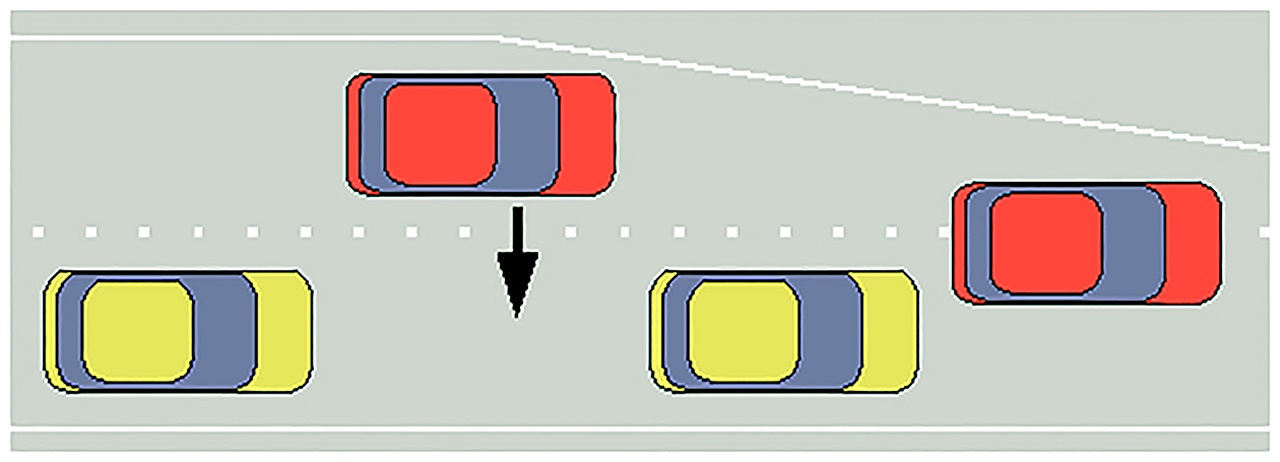Drivers have choice words for their peers who continue down a lane that’s closing — for construction, say — rather than get over into the lane that’s open, like everyone else.
“Cheater!”
“Jerk …”
And some others that I cannot print.
But what if I told you that driver may actually be more polite than you?
By now, you might have heard of “the zipper merge.”
Instead of getting over early, drivers are encouraged to keep using all lanes until they disappear, and then take turns at the merge point.
You won’t find this in your Washington Driver Guide.
And it’s not in the curriculum for most driving school instructors.
But an economist and traffic engineers alike say it is the most efficient way to reduce congestion in heavy traffic situations — and keep everyone safer. So we’re zipping up for this Back to Driving School lesson.
The zipper merge has primarily been promoted by some states during major construction projects. The Washington State Department of Transportation emphasized it in 2014 with an I-90 project through Bellevue.
Some efforts are just PR. Others place electronic signs along the roads, telling drivers to “Merge Here, Take Turns,” and measure traffic flow to use those signs when the zipper would be most beneficial.
The technical name for zipper merging in the United States is “dynamic late merge system.” In Germany and Austria, it’s more simply the Reißverschlusssystem — an actual law, with permanent signs and driver’s instruction. (We apparently take after our British peers more, with our obsession with queuing.)
Now, the zipper isn’t always best. When traffic is moving at highway speeds and there are no backups, it makes sense to merge early. The key is safety. And in heavy congestion, it’s considered safer to zipper since the method slows everyone down while keeping overall lines shorter.
Research shows the zipper merge can reduce the overall length of a backup by as much as 50 percent, and often 40 percent. It can reduce road rage, by slowing both lanes of travel down so everyone feels “equally disadvantaged.”
It’s also legal. (What’s illegal? Straddling lane markings to block people from continuing down a lane.)
It’s so simple, even a kindergartner gets it.
Still, more than a decade into promotion efforts, many drivers remain rigid about their own sense of right and wrong.
It was a decade ago that University of Washington economist Dick Startz wrote a column for The Herald about the zipper merge — though it wasn’t called that at the time.
Startz, now at the University of California, wrote then: “The efficient merge point is all the way at the head of the line, at the point where the two lanes actually begin to join into one. When we all merge early, the last few hundred yards of one lane go to waste. The space in that lane is there for us to use: We should use it!”
He noted that it could only happen, however, if society agreed it should be the new custom.
It was a tough sell then, when “Northwest nice” was still considered a thing. What about now, when it’s more about the “Seattle freeze”?
I chatted with Startz about the topic recently.
His thinking remains the same, except perhaps to emphasize that a zipper merge would correct our norms of politeness.
”Rather than just tell people to use both lanes, which nice folks have been brought up to view as queue jumping, everyone should use the shortest queue and then show their good side by scrupulously zipper-merging at the very end,” he said.
He said an early 20th century cartoon of Alphonse and Gaston aptly makes the point:

By Frederick Burr Opper – American Journal Examiner
Retrieved from Scoop, Public Domain, https://commons.wikimedia.org/w/index.php?curid=17903610
In his original essay, Startz suggested starting with a couple of problem areas and adding signs to help drivers start to make the shift.
WSDOT still has no plans to go that far, unfortunately.
The agency plans to promote the zipper merge during major construction projects.
And it encourages the zipper when asked about it in specific cases.
@SpeakStealth If there is pavement available in other lanes – we encourage you to zipper merge. However, no cutting across gore points, etc.
— WSDOT Traffic (@wsdot_traffic) August 18, 2016
But don’t expect any signs or public service announcements for non-construction areas, even if the zipper merge would be beneficial, said Mike Swires, a WSDOT traffic engineer.
Swires encourages the zipper, particularly in heavily congested areas where the method is most beneficial. One example would be on I-5 when the Express Lanes are closed in the direction you’re traveling.
“We would tell drivers to go ahead and use that lane until it ends. If we can all work together on this, it can reduce congestion,” Swires said.
So there you go. You have permission to be polite. Now go do the zipper.
Talk to us
> Give us your news tips.
> Send us a letter to the editor.
> More Herald contact information.
























